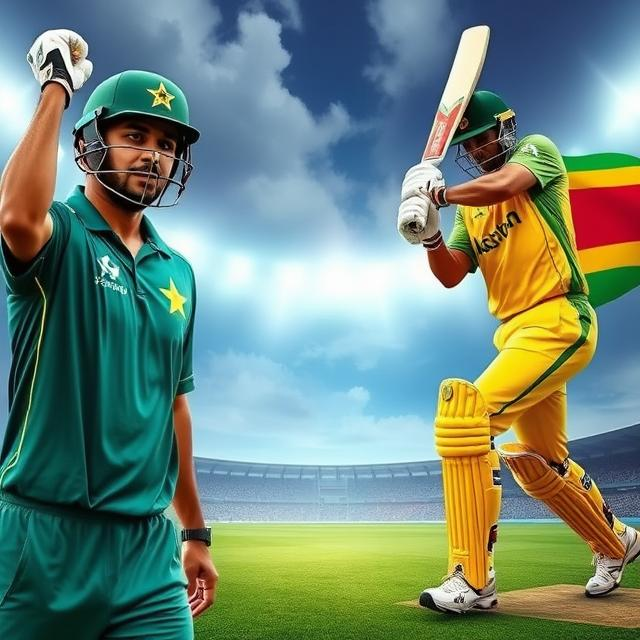Pakistan’s ICC Cricket World Cup 2017 Squad: A Deep Dive

Pakistan’s ICC Cricket World Cup 2017 Squad: A Deep Dive
The 2017 Cricket World Cup in England and Wales was a pivotal moment for Pakistan cricket. Packed with both high expectations and heartbreaking defeats, the tournament offered a compelling look into the squad’s strengths and weaknesses. Let’s delve into Pakistan’s 2017 World Cup squad, exploring the individual performances and the broader context of the team’s campaign.
Unveiling the Squad: The squad assembled for the 2017 World Cup held a blend of experienced veterans and promising young talents. Understanding the makeup of this squad is essential to appreciating the complex dynamics of their campaign.
Key Players and Their Roles
Pakistan’s 2017 squad featured a core of established players, including some who were already in their prime cricketing years. A deeper look reveals how each player’s role contributed to the team’s strategy and overall performance.
- Misbah-ul-Haq (Captain): The experienced Misbah-ul-Haq captained the side. His calm demeanor and strategic acumen were highly valued, but perhaps the team’s reliance on his experience was a limitation in the face of newer, more aggressive approaches.
- Babar Azam (Emerging Star): While not yet a fully established superstar, Babar Azam exhibited glimpses of the exceptional talent that would elevate him to international prominence in the years to come.
- Sarfaraz Ahmed (Wicket-keeper): Sarfaraz’s wicket-keeping prowess and occasional batting contributions were crucial to the team. Assessing his leadership role during matches can provide valuable insights.
- Mohammad Amir, Hasan Ali, and Wahab Riaz (Fast Bowling): This trio delivered important pace and variations, but consistent excellence remained a challenge. Analysis of their individual performances and how the team utilized them will provide a more detailed picture.
- Hasan Ali (All-rounder): Hasan Ali showcased his ability as a crucial part of the fast bowling attack and contributing with the bat. However, an in-depth study of his specific strengths and weaknesses during the matches is essential for a nuanced understanding.
- Azhar Ali (Batsman): The consistent contributions of Azhar Ali to the batting order are worth analyzing in the context of overall squad performance. Did he consistently deliver or were there setbacks that affected the team’s chances?
Examining the roles of each player and how they interacted with each other gives a better sense of the team’s dynamic during the tournament.
Pakistan’s Tournament Performance
Pakistan’s 2017 Cricket World Cup campaign was undoubtedly a complex tapestry of thrilling victories and agonizing defeats. Understanding these challenges, successes, and ultimately, failures offers valuable insights into the team’s trajectory and potential for future success.
Crucial Matches and Turning Points: Highlighting key matches and the factors that influenced their outcome can offer a deeper understanding of Pakistan’s performance. Analyzing these turning points reveals valuable insights into the team’s strengths, weaknesses, and decision-making process.
Challenges Faced: The team faced obstacles such as injuries, inconsistent performances by certain players, and fluctuating form that collectively affected their overall results. Identifying these challenges provides valuable insight into the squad’s potential areas for improvement.
Missed Opportunities: Did Pakistan miss any key opportunities during the matches? Evaluating potential opportunities for victory or progress will be insightful, and exploring these missed chances allows for a comprehensive understanding of the team’s performance.
Comparing to Other Teams
Looking at Pakistan’s performance in relation to the other top teams in the tournament reveals crucial context and can help define areas for future improvement. A comparative analysis gives a more comprehensive understanding of their position on the global stage.
Overall Assessment and Conclusion
Pakistan’s 2017 World Cup campaign was a fascinating case study, showcasing their strengths, weaknesses, and overall development as a team. Analyzing the squad’s overall performance and individual contributions provides insights into their subsequent progress and future potential. This detailed look allows for understanding their journey, allowing for an informed view of the team’s past, present, and future prospects.
Understanding the strengths, weaknesses, and critical moments during the 2017 World Cup is essential for both evaluating Pakistan’s performance and providing guidance for future teams. This approach enables a more thorough comprehension of the team’s potential.
Overall, Pakistan’s 2017 World Cup campaign was a significant period in their history. The lessons learned and the insights gained from this tournament were valuable. The interplay between individual and team performances provides a profound understanding of the challenges faced during the competition. The interplay between individual performances and the broader team strategy offers essential knowledge for a deep understanding of the team’s evolution.
The experiences, both positive and negative, of this World Cup squad significantly shaped the trajectory of Pakistani cricket and offer valuable insights for current and future players.
Further Research: Further research into player interviews, match analyses, and team discussions could further enhance our understanding of Pakistan’s performance in the 2017 Cricket World Cup. A deeper exploration of these resources offers more detailed insights into the team’s decisions and individual contributions.
The 2017 World Cup, for Pakistan, was a complex blend of triumphs and setbacks that served as a crucial stepping stone for the team’s future development.